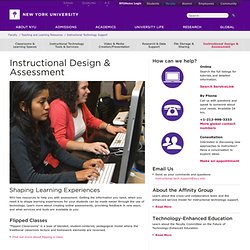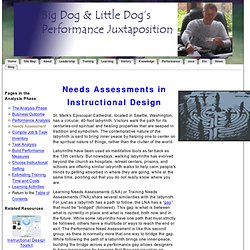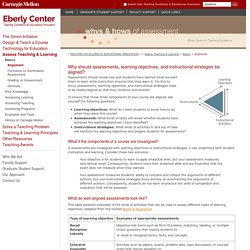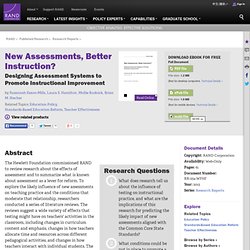

EJ990034.pdf. OERL : PD Modules : Developing Interviews : Chapter 3. Assessing Community Needs and Resources. What are surveys?

Why should you conduct a survey? When should you conduct a survey? How do you prepare a survey? How do you distribute your survey? How do you analyze and compile the results of your survey? When you want somebody's opinion, you ask for it. Conducting surveys can be done very simply, or it can be very complicated, depending on how much you want to ask on the survey and the number of people to whom it is administered. What are surveys? A survey is a way of collecting information that you hope represents the views of the whole community or group in which you are interested. There are three main ways of going about this: Case study surveys, which collect information from a part of a group or community, without trying to choose them for overall representation of the larger population.
Conducting Primary Research. Summary: Primary research involves collecting data about a given subject directly from the real world.

This section includes information on what primary research is, how to get started, ethics involved with primary research and different types of research you can do. It includes details about interviews, surveys, observations, and analysis. Contributors:Dana Lynn Driscoll, Allen BrizeeLast Edited: 2010-04-17 06:11:20 If you are conducting primary research using surveys or interviews, one of the most important things to focus on is creating good questions.
When creating questions you want to avoid: Biased questions Biased questions are questions that encourage your participants to respond to the question in a certain way. Biased question: Don't you agree that campus parking is a problem? Techniques of Survey Method. Telephonic Interview Telephone Interviewing stands out as the best method for gathering quickly needed information.

Responses are collected from the respondents by the researcher on telephone. Advantages of Telephonic Interview It is very fast method of data collection. It has the advantage over “Mail Questionnaire” of permitting the interviewer to talk to one or more persons and to clarifying his questions if they are not understood. Instructional Design & Assessment. NYU has resources to help you with assessment.

Getting the information you need, when you need it to shape learning experiences for your students can be made easier through the use of technology. Learn more about creating online assessments, providing feedback in new ways, and what services and tools are available to you. “Flipped Classrooms” is a type of blended, student-centered, pedagogical model where the traditional classroom lecture and homework elements are reversed. Find out more about flipping a class. Educational Assessment.
Assessment is the process of determining whether instructional objectives have been met.

Assessment is an essential component of of instructional design. Objectives The first step in creating instruction is setting objectives. Learning and Training Needs Assessments in Instructional Design. St.

Mark's Episcopal Cathedral, located in Seattle, Washington, has a circular, 40-foot labyrinth. Visitors walk the path for its centuries-old spiritual and healing properties that are seeped in tradition and symbolism. The contemplative nature of the labyrinth is said to bring inner peace by helping one to center on the spiritual nature of things, rather than the clutter of the world.
Labyrinths have been used as meditative tools as far back as the 13th century. But nowadays, walking labyrinths has evolved beyond the church as hospitals, retreat centers, prisons, and schools are offering similar labyrinth walks to help calm people's minds by getting absorbed in where they are going, while at the same time, pointing out that you do not really know where you are. Learning Needs Assessments (LNA) or Training Needs Assessments (TNA) share several similarities with the labyrinth. Define. Assess Intructional Materials. Align Assessments, Objectives, Instructional Strategies. Assessments should reveal how well students have learned what we want them to learn while instruction ensures that they learn it.

For this to occur, assessments, learning objectives, and instructional strategies need to be closely aligned so that they reinforce one another. Lesson 7 - Assessment Instruments. Lesson 7 - Assessment Instruments Lesson 7 Readings Read Chapter 7, Developing Assessment Instruments, from Dick and Carey.

Background Information At this point youve come quite a ways in the instructional design process. You assessed your needs and wrote an instructional goal statement. New Assessments, Better Instruction? Designing Assessment Systems to Promote Instructional Improvement. The Hewlett Foundation commissioned RAND to review research about the effects of assessment and to summarize what is known about assessment as a lever for reform.

To explore the likely influence of new assessments on teaching practice and the conditions that moderate that relationship, researchers conducted a series of literature reviews. The reviews suggest a wide variety of effects that testing might have on teachers' activities in the classroom, including changes in curriculum content and emphasis, changes in how teachers allocate time and resources across different pedagogical activities, and changes in how teachers interact with individual students. The literature also identifies a number of conditions that affect the impact that assessment may have on practice. The research described in this report was sponsored by the William and Flora Hewlett Foundation, and was produced within RAND Education, a unit of the RAND Corporation.